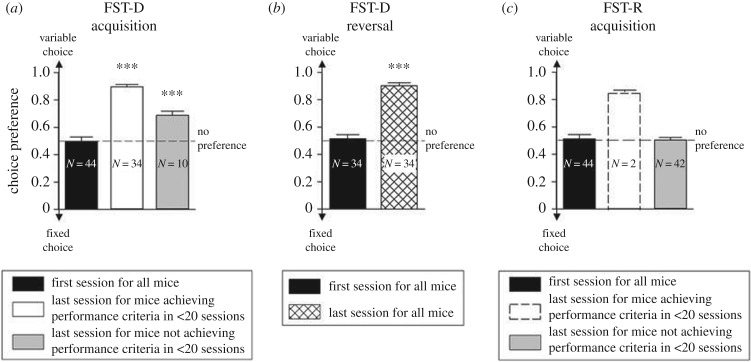Figure 3.
Preference for responding in the fixed versus variable delay to reward (FST-D) and fixed versus variable reward amount (FST-R) food-scheduling tasks. For each task, mice were given a maximum of 20 sessions to reach an arbitrary 75% preference criterion. (a) In the FST-D, all mice initially showed no choice preference but a majority (34/44) did reach the preference criterion within the 20 testing sessions available; the mice that did not reach the preference criterion (10/44) still showed a significant above-chance preference. (b) The 34 mice that reached the 75% performance criterion in less than 20 sessions in the FST-D task were further tested in reversal. After an initial disruption to behaviour, leading to the temporary abolition of the preference for the variable delay condition, this preference was rapidly re-established post-reversal with all of the mice reaching the 75% preference criterion within 20 sessions. (c) In the FST-R task, however, the initial lack of preference for fixed or variable amounts of reward persisted throughout the 20 test sessions available. This was the case for the large majority (42/44) of the animals but two animals did show a preference for the variable amount of reward choice and indeed reached the arbitrary 75% preference criterion, the data for these two mice have been included for completeness. Data show mean ± s.e.m. N values for each condition are shown within the individual bar charts. *** denotes p < 0.001 for choice preference in comparison to chance (no preference) performance.

